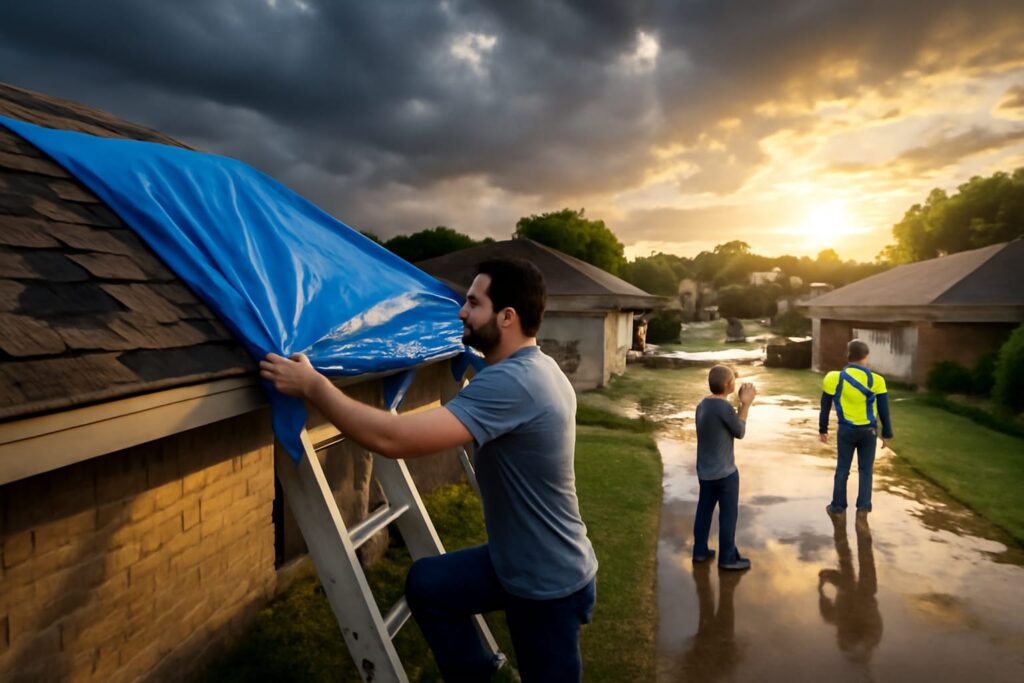Blog Details
- Home
- Blog details

Storm Damage Insurance Claims – A Homeowner’s Survival Guide
- Sep 19, 2024
- Sohel
- Comments
Severe storms can strike with little warning, leaving behind roof damage, broken windows, flooding, and even structural issues. While homeowners insurance is supposed to cover storm damage, the claim process can be overwhelming, with insurers often questioning whether the damage was caused by wind, hail, or pre-existing issues.
This guide will help you understand how to file a storm damage claim, avoid common pitfalls, and get the settlement you deserve.
Step 1: Assess and Secure Your Property
After a storm passes, safety comes first. Watch out for downed power lines, unstable structures, and sharp debris. If it’s safe, take steps to secure your property from further damage, such as tarping your roof or boarding up broken windows.
Step 2: Document Storm Damage Immediately
Insurance companies expect clear proof of storm-related destruction. Be sure to capture:
- Photos and videos of roof shingles, gutters, and siding damage.
- Evidence of hail strikes on vehicles, windows, and outdoor equipment.
- Water damage inside the home, including walls, ceilings, and flooring.
Step 3: Review Your Policy Coverage
Typical homeowners insurance may cover:
- Wind damage to roofs and siding.
- Hail damage to roofs, windows, and exterior surfaces.
- Water damage caused by storm-created openings (not general flooding).
- Additional living expenses if your home is uninhabitable.
Note: Flooding from rising water often requires separate flood insurance.
Step 4: File Your Claim Quickly
Insurance companies may deny or delay claims filed too late. Provide your insurer with:
- A detailed description of the damage.
- Documentation of repairs needed.
- Receipts for any emergency mitigation expenses.
Step 5: Be Prepared for the Adjuster’s Visit
The adjuster will assess storm-related damage. Strengthen your claim by:
- Presenting your documentation and photos.
- Having a contractor’s inspection report.
- Asking questions about repair versus replacement coverage.
Common Challenges in Storm Damage Claims
- Roof claims denied as “wear and tear” instead of storm damage.
- Partial approvals that don’t cover full repair needs.
- Extended delays in processing due to high claim volume after major storms.
Recent posts
Roof Damage Insurance Claims – Storms, Hail, and…
Insurance Claim Denials – How to Fight Back…
FAQs
Yes, if a storm causes a tree to fall on your home, most policies cover repairs. Removal costs for trees that don’t damage property may not be included.
Usually, yes, but insurers may argue the damage is cosmetic rather than functional.
Flooding from rising water typically requires separate flood insurance.
Yes, most policies allow you to select your contractor. iClaimVia can help you find licensed professionals and avoid insurer-preferred low bids.
That’s fine—just document everything with photos and receipts. Insurers may still reimburse you for covered work.
Insurance only covers sudden storm damage, not gradual deterioration. An inspection from experts like iClaimVia can help prove it was storm-related.
Share on
Related Posts
Hailstorm Insurance Claims – Step-by-Step Guide
Blog Details Home Blog details Hailstorm Insurance Claims – Step-by-Step Guide Sep 19, 2024 Sohel…
Roof Damage Insurance Claims – Storms, Hail, and Wind…
Blog Details Home Blog details Roof Damage Insurance Claims – Storms, Hail, and Wind Sep…
Insurance Claim Denials – How to Fight Back and…
Blog Details Home Blog details Insurance Claim Denials – How to Fight Back and Win…
- CALL NOW
Need Immediate Help?
Storm damage can turn your life upside down in minutes. Don’t let insurance challenges add to your stress. iClaimVia helps homeowners handle storm-related insurance claims with confidence, ensuring you get the settlement needed to repair and restore your property.
Satisfied customers





